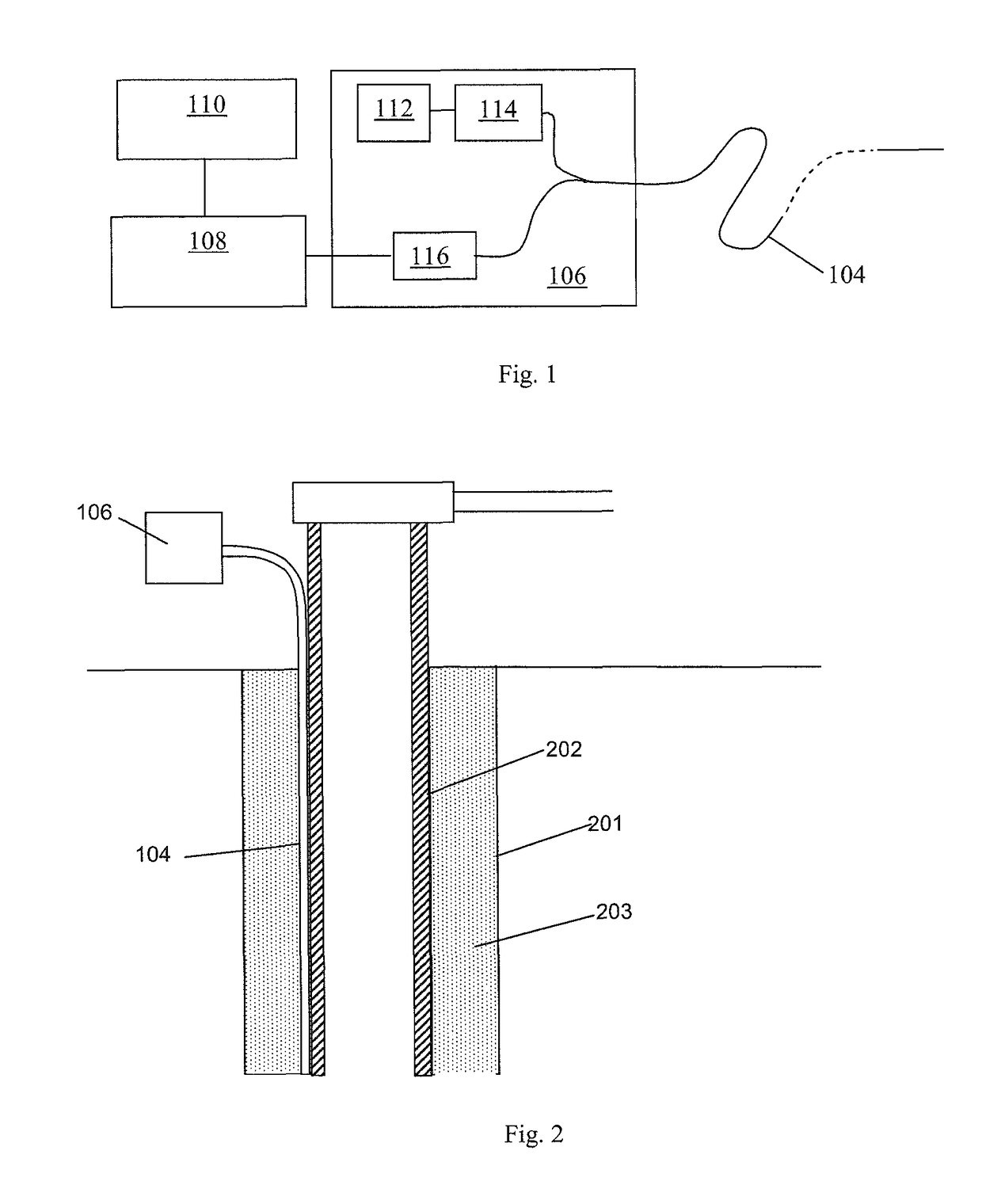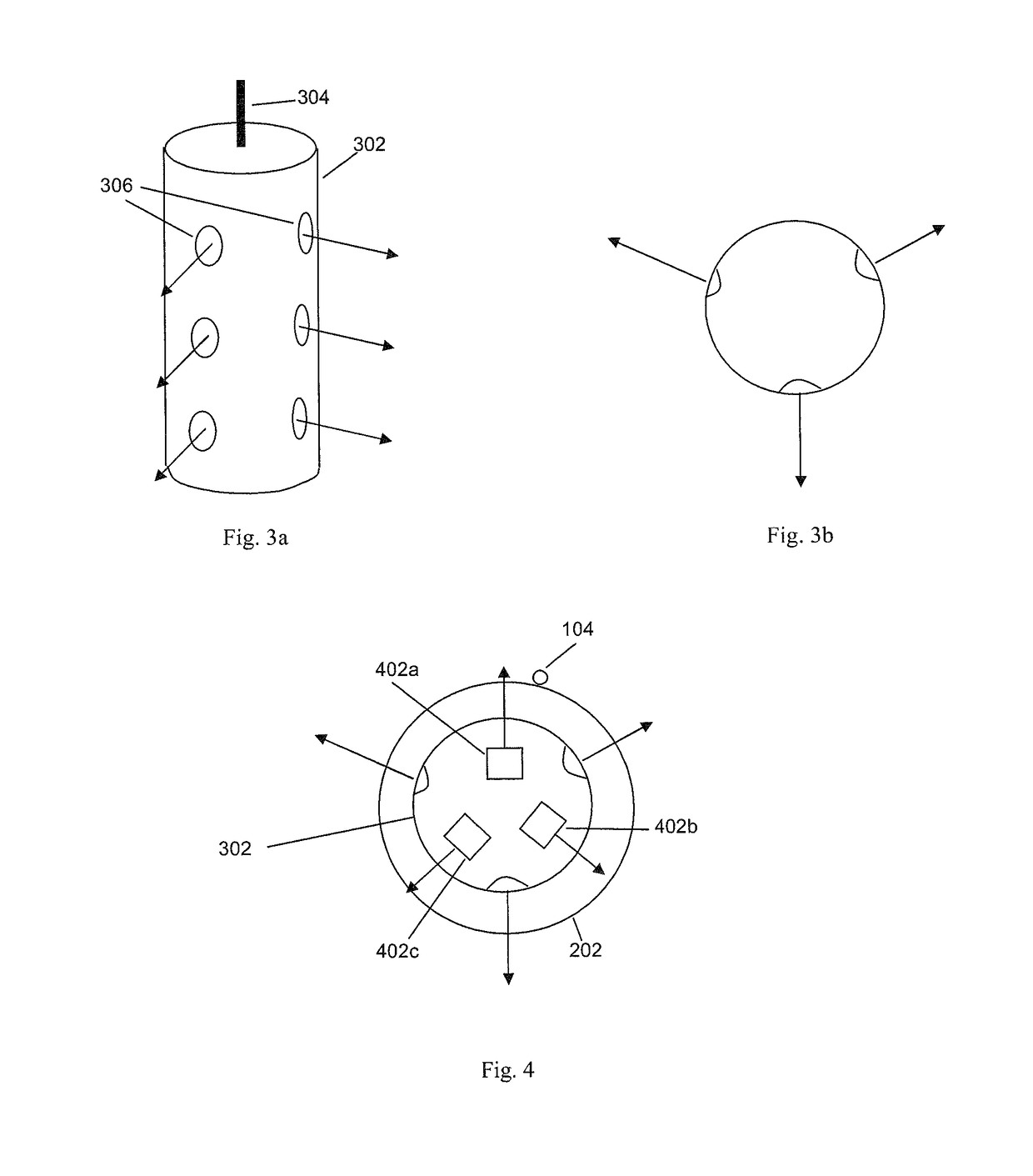Determining perforation orientation
a technology of perforation and orientation, applied in the direction of instruments, survey, borehole/well accessories, etc., can solve the problems of in situ optical fibre during perforation step, no useable optical signal can be received from optical fibre at locations deeper into the well, and no useable optical signal may be received from the section of optical fibre deployed in the production zon
- Summary
- Abstract
- Description
- Claims
- Application Information
AI Technical Summary
Benefits of technology
Problems solved by technology
Method used
Image
Examples
Embodiment Construction
[0054]FIG. 1 shows a schematic of a distributed fibre optic sensing arrangement. A length of sensing fibre 104 is removably connected at one end to an interrogator 106. The output from interrogator 106 is passed to a signal processor 108, which may be co-located with the interrogator or may be remote therefrom, and optionally a user interface / graphical display 110, which in practice may be realised by an appropriately specified PC. The user interface may be co-located with the signal processor or may be remote therefrom.
[0055]The sensing fibre 104 can be many kilometers in length and can be at least as long as the depth of a wellbore which may be at least 1.5 km long. The sensing fibre may be a standard, unmodified single mode optic fibre such as is routinely used in telecommunications applications without the need for deliberately introduced reflection sites such a fibre Bragg grating or the like. The ability to use an unmodified length of standard optical fibre to provide sensing ...
PUM
 Login to View More
Login to View More Abstract
Description
Claims
Application Information
 Login to View More
Login to View More - R&D
- Intellectual Property
- Life Sciences
- Materials
- Tech Scout
- Unparalleled Data Quality
- Higher Quality Content
- 60% Fewer Hallucinations
Browse by: Latest US Patents, China's latest patents, Technical Efficacy Thesaurus, Application Domain, Technology Topic, Popular Technical Reports.
© 2025 PatSnap. All rights reserved.Legal|Privacy policy|Modern Slavery Act Transparency Statement|Sitemap|About US| Contact US: help@patsnap.com



